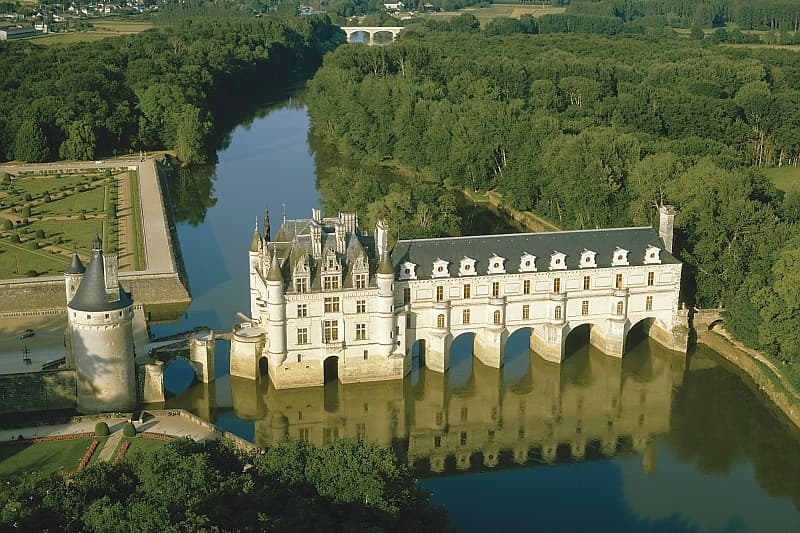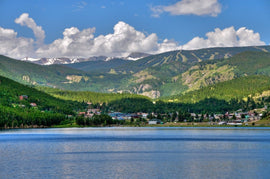LOIRE VALLEY
France's heart, the Loire Valley, is renowned for its stunning landscapes, magnificent châteaux, and exceptional wine. This region is steeped in a rich history and vibrant culture. It is the birthplace of Renaissance writer Rabelais and the location where Joan of Arc led French forces to victory in the Hundred Years’ War. Furthermore, the residents of the Loire Valley speak the purest form of the French language, making it the cradle of linguistic heritage. Within the Loire Valley, there are distinct wine regions, each with their own unique grapes, appellations, and styles. In recognition of its contributions to French and global culture, the Loire Valley (stretching from Sully-sur-Loire to Chalonnes-sur-Loire) was added to UNESCO's World Heritage list in 2000. The Loire Valley is divided into four main regions: Lower, Middle, Centre, and Upper Loire.
The wines we have for this month originate from the Anjou and Touraine regions in the Middle Loire. As you move away from the coast, the maritime weather becomes milder. The climate and seasons here are more distinct and welcoming. This specific part of the Loire Valley, while relatively flat, is one of the warmest regions. In the Western Anjou, there are dark schist soils known as "Anjou Noir" that produce robust, well-structured wines. Digging is not possible, so the cellars are built above ground. On the other hand, the eastern part of the region showcases oyster-speckled limestone called "tuffeau blanc." This type of soil is easily crumbly, making it ideal for producing sparkling wines. Touraine is situated on the Paris Basin, which means it is rich in limestone, specifically "Turonian tuffeau," topped with flinty clay known as "perruches," or sand and gravel. Each of these soil types contributes to the wine's intensity, structure, and aging potential. Tuffeau is considered the most esteemed, followed by perruches, and finally gravel.
Back in the 18th century, Clos Roussely was an outbuilding of the enormous castle perched at the center of the village of Angé-sur-Cher. Even today, its meter-and a-half thick walls do a better job of insulating the ancient winery than most modern constructions, and the 250-year-old, hand-dug caves are stacked floor-to-ceiling with perfectly conditioned barrels. The transition from outbuilding to winery began in 1917, when Anatole Roussely purchased it with the intention of converting it into a winemaking facility. He was the first of four generations to pour his life's work into the Clos, and today his great-grandson, Vincent Roussely, carries on the tradition with the same meticulous attention to detail. Vincent decided to take over the operation and buildings of the old trade in 2001. Since then, he has continued to bring this place back to life, to develop it to better welcome and share his passion for wine.
Stéphane Rocher was a marketing and advertising executive in Paris for many years. In 2008 he completed a winemaking course in Montreuil and in 2011 Stéphane decided to leave the city and buy and renovate a farm in Anjou where he grew up. The property he purchased included a winery and a house set on 2 hectares of rolling hills. While he renovated his property, Stéphane worked as a caviste in Anjou. Over time he purchased additional hectares of vines and at this point began to focus completely on his own vineyards and making his own wine. Today Stéphane owns 25 hectares of land split between vines, forested areas, vegetable gardens and rolling fields. His vines stretch over 6.5 hectares of land. Stéphane's vision is all about championing the ecosystem and biodiversity of his property and he follows biodynamic principles. Stéphane's vines are certified organic by Agriculture Biologique.
|
Clos Roussely Touraine Chenonceaux Blanc 2022 |
|
|
Region / Country of Origin: Touraine-Chenonceaux, Loire Valley, France |
About the vineyard: The vineyard is located in the Touraine-Chenonceaux and Touraine appellation areas, in the heart of the village of Angé, and overlooks the shores of the Cher. It extends over 8 hectares certified in Organic Agriculture since 2007. The oldest vines of the domain are 80 years old. The clay-limestone terroir is filled with flint soil, and the climate allows a superb expression of Sauvignon Blanc. This grape represents about 80% of the estate, with the remaining 20% being Côt, Pineau d'Aunis, Cabernet Franc and Gamay. No herbicides, pesticides or chemicals are ever used in the vineyard. The oldest vines are plowed by horse and many different types of trees and plants have been planted throughout the vineyard to protect the vines and promote biodiversity within the farm. Harvest is done manually. About the winemaking: The vinification takes place in cellars dug into the tufa under the vineyard. These galleries were dug 250 years ago and specially adapted for winemaking and wine aging. Custom shaped stainless steel tanks have been built inside the rock walls itself. The constant temperature between the seasons allows for slow fermentation and storage of the wine without thermal variations. Some cuvées are aged in 400 liter French oak barrels, cleaned and steamed annually. The wines are made naturally without commercial yeast or fining. Sulfur is used in small amounts. Aged 8 months in stainless steel tanks. Tasting Notes: A delicate and fresh lightly floral nose, filled with stone fruit grapefruit and subtle hints of peach blossoms. There is more tropical and exotic textured fruit on the palate with a touch of flint and fresh squeeze of key lime on the finish. |
|
Winemaker: Vincent Roussely |
|
|
Price: $26 |
|
|
Suggested Food Pairing: Asparagus souffle, Avocado and prawns verrine, Bibimbap, Penne pasta with ratatouille |
|
|
Domaine Stéphane Rocher Petits Cailloux Red 2022 |
|
|
Region / Country of Origin: Pays Nantais, Loire Valley, France |
About the Winemaker: Stephane Rocher is part of the collective of young natural winegrowers from Anjou called “En Joue Connection”, in which amateurs will recognize many rising stars … Stéphane Rocher enjoys composing natural Loire wines that he wants to be accessible to a wide audience. His wines are pleasant for both amateurs and novices. About the winemaking: The grapes (80% Grolleau and 20% Grolleau Gris) are all picked on the same day. The wine is a blend of grapes that go through eight days of carbonic maceration and grapes that are direct pressed. Fermentation occurs with natural yeasts, and the wine is aged 5 months in tanks. It is bottled in the springtime unfined and unfiltered. Tasting Notes: Petits Cailloux is a light red wine with notes of red berries, wild strawberries, and rhubarb. It is fruity and light with structure on the finish. Serve chilled as an aperitif or room temp with a variety of dishes. |
|
Winemakers: Stephane Rocher |
|
|
Price: $24 |
|
|
Suggested Food Pairing: Goat cheese and tomato tart, Grilled pork spare ribs, Charcuterie, Mexican street tacos |
|





